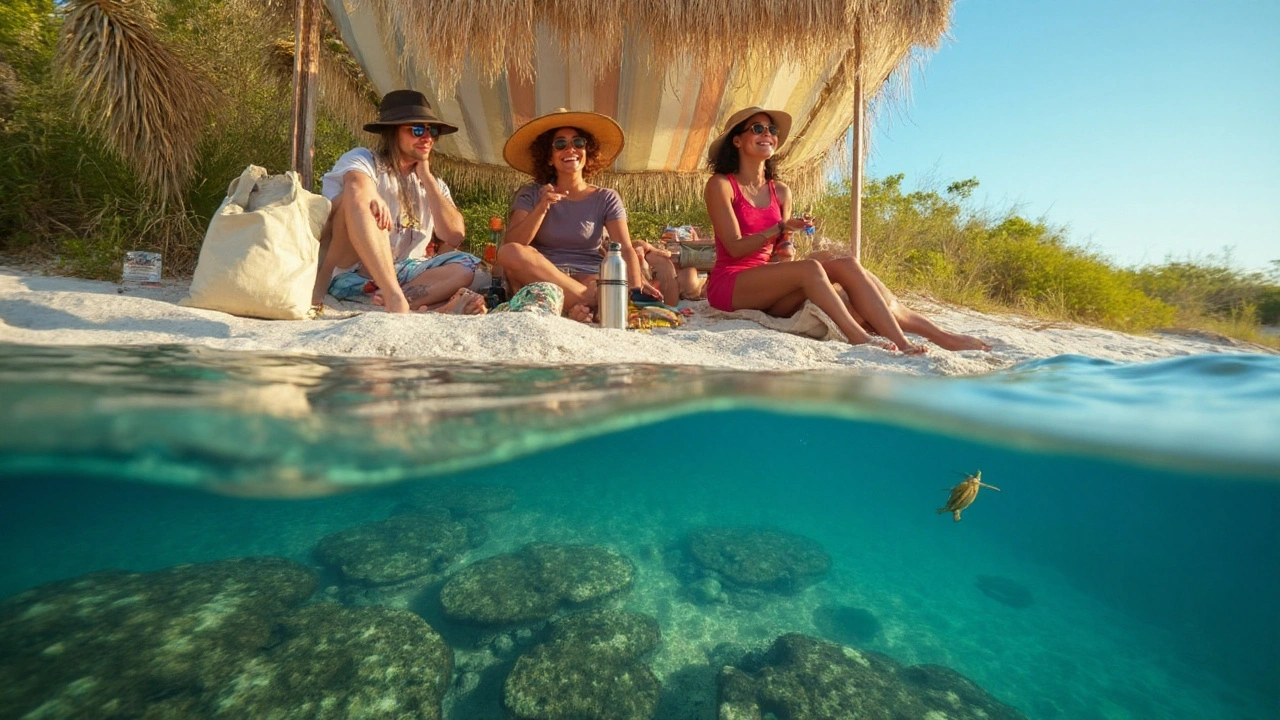Reef‑Safe Sunscreen: Protect Your Skin and the Ocean
If you love the beach, you probably love the water too. But many sunscreens dump chemicals into the sea that can kill coral and other marine life. That’s why a reef‑safe sunscreen is a must‑have for anyone who swims, snorkels, or just splashes around.
Reef‑safe sunscreens work the same way as regular sunscreens – they block UV‑A and UV‑B rays so you don’t get burnt. The difference is the active ingredients. Instead of oxybenzone or octinoxate, which are proven to damage coral reefs, reef‑safe formulas use mineral filters like zinc oxide or titanium dioxide that sit on the skin’s surface and are less likely to break down in water.
What Makes a Sunscreen Reef‑Safe?
Look for products that explicitly say “oxybenzone‑free” and “octinoxate‑free.” Those two chemicals are the biggest culprits behind coral bleaching. Mineral filters are generally recognized as safe for marine environments, especially when the particles are non‑nano – meaning they’re big enough not to be absorbed by tiny organisms.
Other ingredients to watch out for include certain preservatives (like parabens) and fragrance oils that can irritate marine life. A simple ingredient list with zinc oxide, titanium dioxide, water, and a few skin‑friendly additives is usually a safe bet.
Best Coral‑Friendly Sunscreen Picks
Here are a few options that consistently get good reviews from both sun lovers and environmental groups:
- Badger Clean Protection – 100% zinc oxide, biodegradable, and comes in recyclable packaging.
- Thinksport Sunscreen – titanium dioxide, no synthetic fragrance, and water‑resistant for up to 80 minutes.
- All Good Sun Cream – a blend of zinc oxide and titanium dioxide, plus a pleasant natural scent.
- Raw Elements Sunscreen – high zinc oxide concentration, reef‑safe, and free of harmful preservatives.
All of these meet the U.S. Food and Drug Administration’s sunscreen standards while keeping the ocean healthier.
When you’re at the beach, apply sunscreen 15‑30 minutes before you go in the water. Use enough – about a tablespoon for each arm and leg – and reapply every two hours, or sooner if you’re swimming a lot. Even reef‑safe sunscreen can wash off, so reapplying inside the water is still important.
In addition to choosing the right product, you can make a bigger impact by using other sun‑smart habits: wear a hat, seek shade during peak sun hours (10 a.m.‑2 p.m.), and use UV‑protective clothing. The less sunscreen you need, the less you’re putting into the sea.
Finally, remember that “reef‑safe” isn’t a universal label yet. Some regions have started banning specific chemicals, but standards vary. If you’re unsure, check the ingredient list yourself – if you see oxybenzone or octinoxate, skip it.
Protecting your skin doesn’t have to come at the cost of protecting reefs. By picking a mineral‑based sunscreen, applying it properly, and pairing it with smart shade strategies, you can enjoy the sunshine while keeping the ocean vibrant for the fish, turtles, and corals that call it home.
Sunburn doesn’t just hurt skin-it harms reefs, air, and water. Learn science-backed ways to prevent burns while cutting waste, chemicals, and pollution.
Sep, 4 2025

